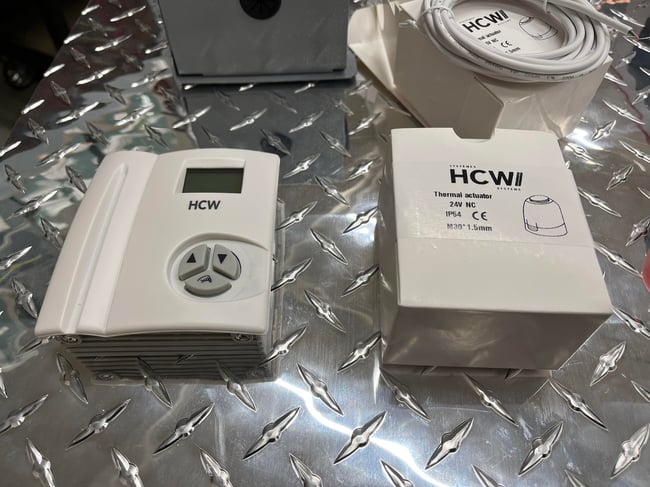28 Nov, 2022
In addition to regulating the heat of the rooms to the desired temperature, the thermostat also allows the saving of energy and money. In the case of electric baseboard heating, it is the temperature fluctuation that allows this saving. For example, turning down the heat in less used rooms. The saving principle for floor heating thermostats is somewhat different: the heating response time is slower. Thus, it is rather the thermal mass that allows the realization of savings! Here is an article that will explain how they work and the different models that are compatible with HCW floor heating systems.
The principle of the thermostat is similar to a feedback loop. It works with two types of thermostats, the electronic one and the connected one. In fact, the thermostats are all connected to each other by wire to a central unit. They have not only an integrated room sensor, but also a floor sensor to be installed to take the floor reading. When the desired temperature is not the same as the temperature sensed by the sensor, a signal is immediately transferred to the control system, which then sends a request to the boiler and pump.
There are different types of thermostats: technological or regular like the electromechanical thermostat. Since electromechanical thermostats are increasingly being abandoned due to technological innovations, let's focus on electronic and connected thermostats.

The electronic thermostat allows different heating options. Generally, for floor heating systems, 3 modes are offered: ambient air, floor sensor and finally a combination of both. The first mode is based on the room temperature while the second mode is based on the floor temperature. The margin of error of the electronic thermostat is one tenth of a degree.
The Wi-Fi connected thermostat for underfloor heating, such as Sinopé, is connected to the control system by wire, but it is also connected in parallel to an internet base that allows sending and receiving information via the web platform. The regulation of the temperature is done through advanced technologies such as presence sensors.
In addition to being easy to use, connected thermostats offer several benefits that make your life easier. Here is a list of their main advantages:
Temperature control is done directly from a smartphone or tablet. Since heated floors are very stable, note that temperature adjustments are not constantly necessary. However, this feature allows you to take a look to make sure everything is correct, even when you're outside! No need to send someone to check the heating when you're away - you can check it right on your device. Moreover, this thermostat is very useful for people who have a second home like a cottage. Indeed, you can lower the temperature when you are away and raise it before you return. Depending on the initial temperature of the room and the thickness of the concrete, it will take between 4 to 6 hours to reach the desired heat.
Finally, this type of thermostat is available in different models compatible with Alexa and Google Home. Your phone is not at hand, but you still want to control the temperature? Just say, "Alexa, adjust the room temperature to 20 degrees!".
Despite its many advantages, the connected thermostat also has some disadvantages. Here are the main elements to take into consideration:
First, the connected thermostat is much more expensive than the previous two models, since it uses a Wi-Fi base that connects with the network. Once you purchase the Wi-Fi block, however, you can connect other accommodating tools like Wi-Fi switches, which also allow light control from your smartphone.
The connected thermostat works even without the internet. However, if you want to control the temperature remotely, you must be connected to the Wi-Fi network (internet). In the same way, you would be limited if a Wi-Fi cut occurs.
That's it! You now have a better general understanding of floor heating thermostats. To understand the simple installation of these devices, don't hesitate to consult the explanatory capsules offered by HCW floor heating systems!